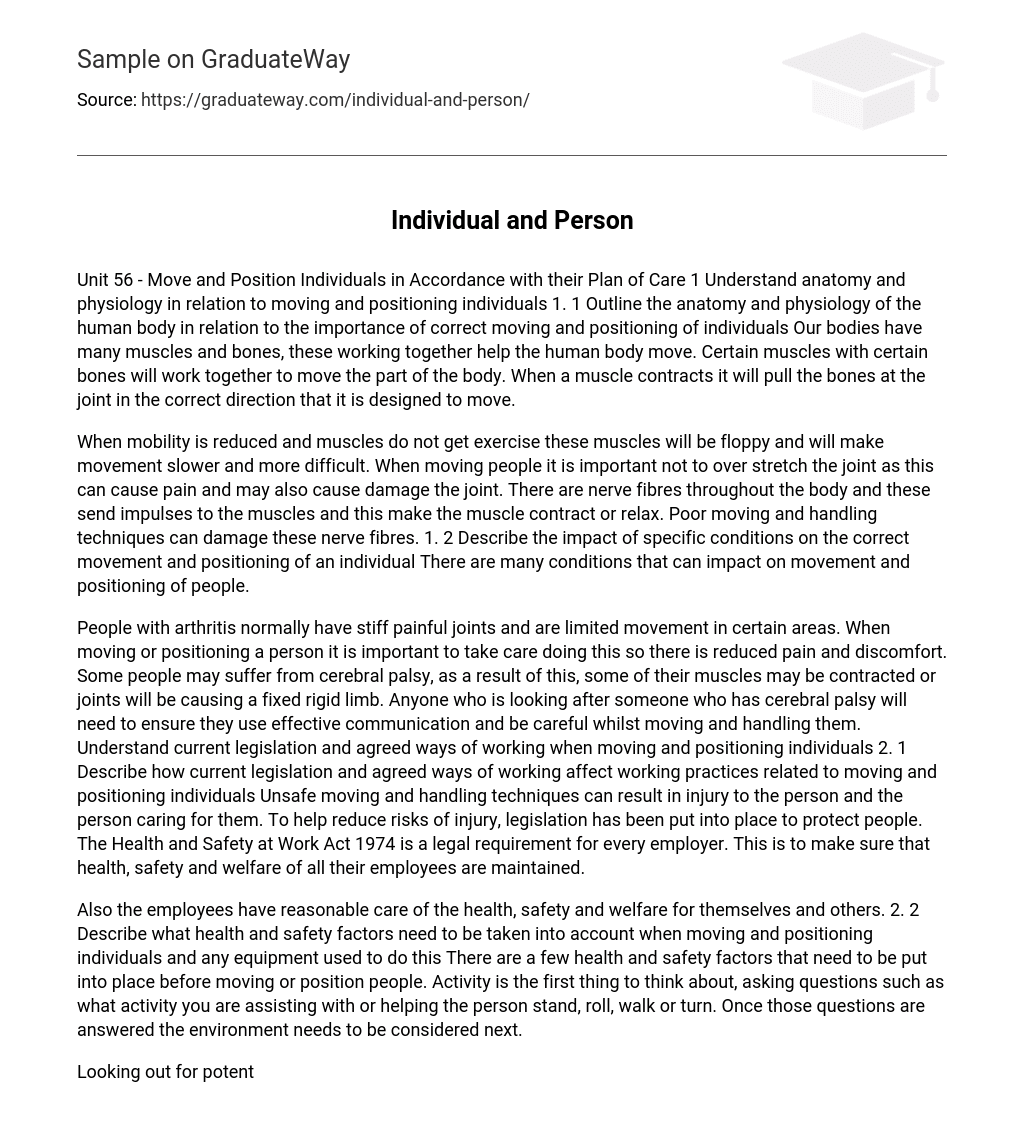The human body consists of muscles and bones that cooperate to enable movement. Different muscles work together with specific bones to create motion in various parts of the body. When a muscle contracts, it pulls the bone at the joint towards the desired direction of movement.
Decreased mobility and a sedentary lifestyle can lead to weakened muscles, causing difficulty and sluggishness in movement. It is essential to refrain from overstretching joints during physical activity to avoid discomfort and possible joint injury. Nerve fibers are distributed throughout the body, transmitting signals for muscle contraction or relaxation. Mishandling and improper movement techniques can potentially damage these nerve fibers. Various conditions can impact an individual’s ability to move and maintain proper positioning.
When assisting individuals with arthritis or cerebral palsy, it is important to be cautious and communicate effectively while handling them. This is because people with arthritis face limited movement due to joint stiffness and pain, whereas those with cerebral palsy may have contracted muscles or rigid limbs. To ensure safety for both the caregiver and the person receiving care, it is crucial to understand legislation and protocols related to moving and positioning individuals. Neglecting proper techniques in moving and handling can result in harm. The Health and Safety at Work Act of 1974 guarantees the maintenance of health, safety, and welfare for all employees as a way to minimize the risks of injury.
The employees are accountable for their own and others’ health, safety, and welfare. When transporting individuals or machinery, certain health and safety factors need to be taken into account. The initial factor to consider is the particular activity involved, such as helping with standing, rolling, walking, or turning. Once the activity is identified, the subsequent step is to assess the environment in which it will take place.
When moving or positioning someone, it is important to consider potential hazards and obstacles that may arise. Additionally, the person being moved should be evaluated for their abilities, necessary support, and any medical devices they have. Before beginning any movements, individuals must assess their own suitability as well as that of others involved. All colleagues should receive proper training, wear appropriate attire, and have well-fitted supportive footwear. The goal is to minimize risks associated with moving and positioning individuals. If a potential risk or hazard is observed, it should be promptly reported to the nurse in charge or manager to prevent harm to both the service user and staff members. It’s worth noting that certain workplaces may have policies and procedures related to moving and handling that conflict with individual preferences.
In order to prevent conflicts and promote independence, it is important to involve the person in their own risk assessment, especially if there is a no lifting policy and the client needs to be hoisted. By giving them the choice of their moving and handling requirements, based on their own knowledge of their mobility, their wishes can be balanced with the carers’ safety. This will help ensure both the person and the carers are not put at risk.
The condition of individuals can vary, either improving or declining, and their preferences for how they wish to be relocated may also alter. It is crucial to record and inform supervisors or managers about these changes. The capability to move and position an individual is essential. Specific equipment utilized for moving and handling, such as hoists, slings, and bath hoists, are governed by the Lifting Operation and Lifting Equipment Regulations (LOLER). Regularly examining the equipment is important in order to guarantee its safety, cleanliness, and appropriateness for the individual.
It is important not to use equipment that is worn, damaged, or unsafe. Before using equipment, all staff members should receive training. There are various types of equipment available for moving and handling individuals. Ceiling hoists are attached to the ceiling and move along a track. Portable hoists can be easily transferred between rooms. Slide sheets, which are made of smooth material, enable easy movement of individuals. Slide boards made of wood or plastic assist in transferring individuals between different locations. When moving and positioning individuals, it is advisable to seek advice or assistance from others. If an individual is experiencing pain or has specific concerns, guidance should be sought on how to safely move or handle them. In case their care needs have changed, information about the impact on their movement and handling should be requested.
It is important to document all changes in the care plan before making any modifications to the way individuals are moved and handled. Care plans provide the most accurate information tailored to their specific needs, as opposed to others. Additionally, information can be obtained from the internet, books, and staff members.





